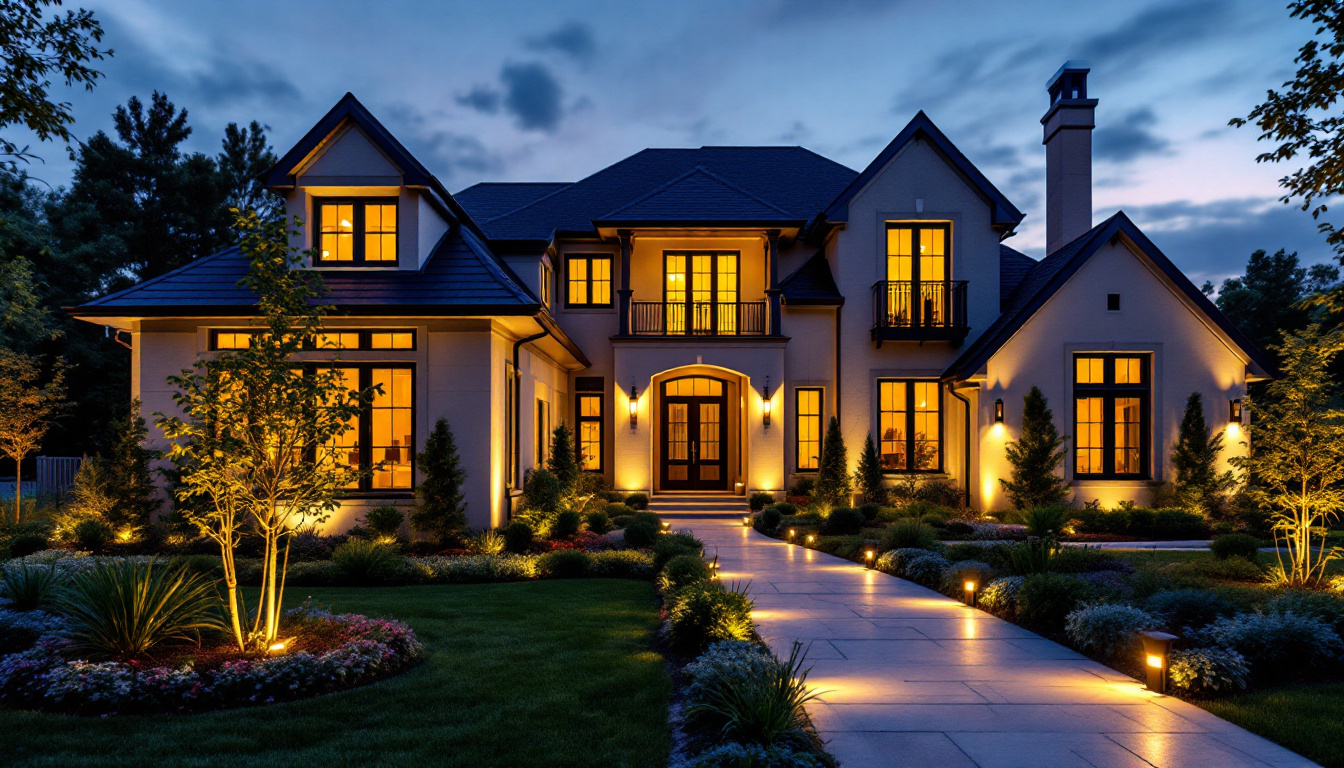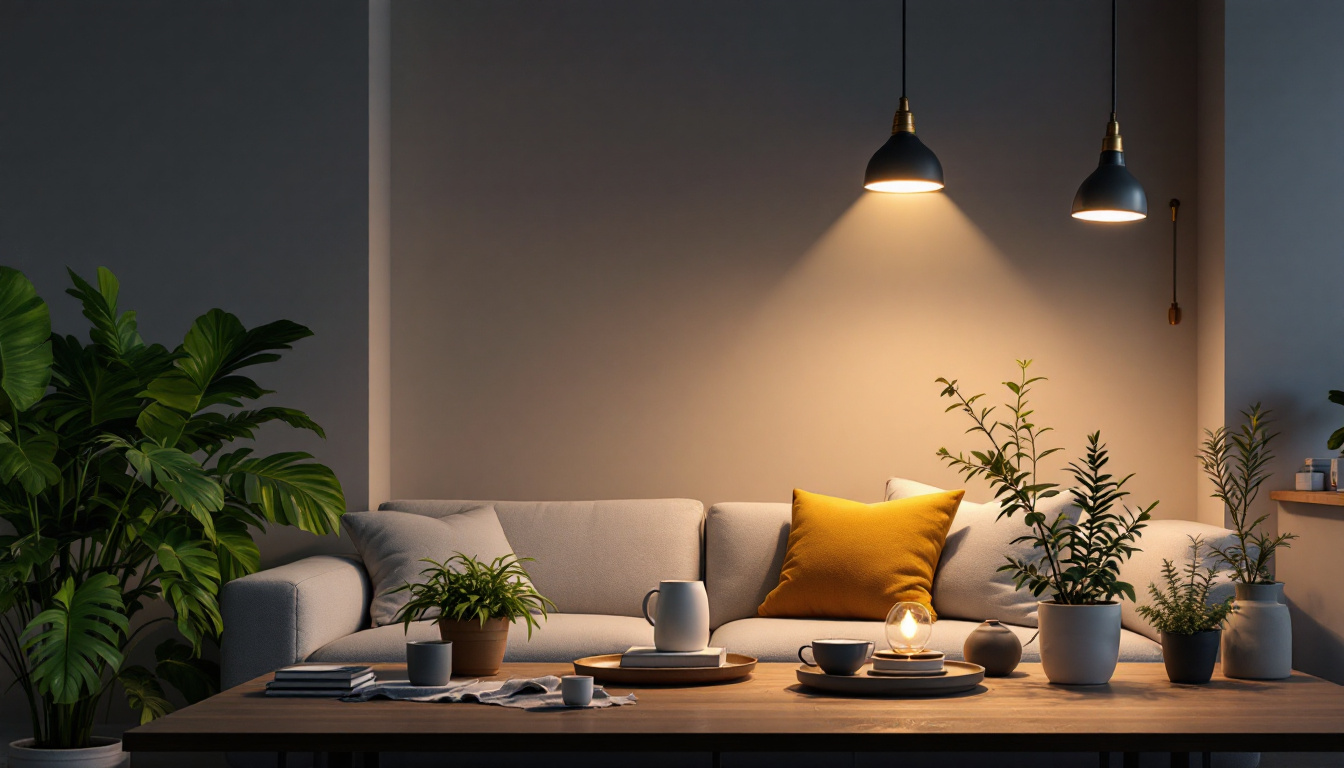
In the world of home illumination, exterior LED house lights have emerged as a preferred choice for their energy efficiency, longevity, and versatility. As a lighting contractor, understanding the nuances of these fixtures is essential for delivering quality installations that meet client expectations. This checklist aims to guide contractors through the critical aspects of selecting and installing exterior LED lighting, ensuring a seamless process from start to finish.
LED lights offer numerous advantages over traditional lighting options. Firstly, they consume significantly less energy, which leads to lower electricity bills for homeowners. Additionally, LEDs have a longer lifespan, often lasting up to 25 times longer than incandescent bulbs. This durability means fewer replacements and reduced maintenance costs, making them an attractive option for homeowners.
Moreover, LED technology has advanced to provide a variety of color temperatures, allowing for customizable lighting solutions that can enhance the aesthetic appeal of any property. From warm white to cool daylight, the options are plentiful, enabling contractors to tailor their offerings to suit individual client preferences.
In addition to their energy efficiency and longevity, exterior LED lights also contribute to improved safety and security around the home. With brighter illumination, pathways, driveways, and entry points can be well-lit, reducing the risk of accidents and deterring potential intruders. Many homeowners appreciate the peace of mind that comes with well-lit outdoor spaces, which can also enhance the overall ambiance of their property during evening hours. Furthermore, the ability to integrate LED lighting with smart home technology allows for remote control and scheduling, making it easier for homeowners to manage their outdoor lighting efficiently.
Another noteworthy aspect of LED lighting is its environmental impact. Unlike traditional bulbs, LEDs do not contain harmful substances like mercury, making them a safer choice for both indoor and outdoor use. Their low heat emission also means that less energy is wasted as heat, contributing to a reduction in overall carbon footprint. As more homeowners become environmentally conscious, promoting the eco-friendly benefits of LED lighting can be a significant selling point for contractors looking to attract clients who prioritize sustainability in their home improvement projects.
Before diving into installation, a well-thought-out lighting design is crucial. This phase involves assessing the property, understanding the client’s needs, and determining the best locations for fixtures. A strategic approach not only enhances the property’s visual appeal but also ensures functionality and safety.
Begin by conducting a thorough assessment of the property. Take note of architectural features, landscaping elements, and any areas that require illumination for safety. Consider factors such as the height of the building, the presence of trees, and any outdoor structures like patios or decks. These elements will influence the type and placement of lighting fixtures.
Additionally, evaluate the existing electrical infrastructure. Understanding the current wiring and power sources will help determine the feasibility of various lighting options and whether any upgrades are necessary. It’s also important to assess how natural light interacts with the space throughout the day. By observing how sunlight casts shadows and highlights different areas, you can make informed decisions about where artificial lighting will be most effective, enhancing both the aesthetic and functional aspects of the design.
Engaging with the client is vital for a successful lighting design. Discuss their preferences regarding brightness, color temperature, and the overall ambiance they wish to create. Some clients may prioritize security lighting, while others might focus on aesthetic appeal for entertaining spaces. By understanding their vision, contractors can propose tailored solutions that align with their expectations.
Moreover, it’s beneficial to explore the client’s lifestyle and how they intend to use the space. For instance, a family that enjoys outdoor gatherings may require flexible lighting options that can be adjusted for different occasions, while a homeowner with a penchant for gardening might need specialized fixtures to highlight their plants at night. Gathering this information not only helps in creating a personalized lighting plan but also fosters a collaborative relationship between the contractor and the client, ensuring that the final design reflects the client’s unique style and needs.
With a solid design in place, the next step is selecting the appropriate LED fixtures. The market offers a wide range of options, each with unique features and benefits. This section outlines key considerations when choosing the right fixtures for exterior lighting projects.
Exterior LED lights come in various forms, including wall-mounted fixtures, floodlights, path lights, and recessed lighting. Wall-mounted fixtures are ideal for illuminating entryways and patios, while floodlights can provide broad coverage for larger areas. Path lights enhance walkways and driveways, ensuring safety during nighttime hours.
Recessed lighting is another option that can create a sleek and modern look, particularly in outdoor living spaces. When selecting fixtures, consider the specific needs of the project and the desired aesthetic. Each type of fixture serves a different purpose, and the right combination can create a harmonious lighting scheme.
When choosing LED fixtures, energy efficiency ratings are paramount. Look for products that have the Energy Star label, as these meet strict efficiency guidelines set by the Environmental Protection Agency. Additionally, consider the lumen output, which indicates the brightness of the fixture. A higher lumen output is essential for areas requiring more light, while lower outputs may suffice for ambient lighting.
Also, pay attention to the color rendering index (CRI) of the fixtures. A higher CRI means that colors appear more accurately under the light, which can be particularly important for landscaping and architectural features. Selecting fixtures with a CRI of 90 or above is advisable for optimal color representation.
Once the fixtures have been selected, proper installation is crucial for ensuring their functionality and longevity. This section outlines key installation considerations that lighting contractors should keep in mind.
Before installation, verify that the electrical system can handle the additional load of the new fixtures. This may involve upgrading circuits or adding dedicated circuits for specific areas. Ensure that all wiring is up to code and that the installation complies with local regulations.
When wiring outdoor fixtures, use weather-resistant materials to prevent damage from the elements. Additionally, consider using low-voltage systems for landscape lighting, as they are safer and easier to install. Low-voltage systems can also be more energy-efficient, further enhancing the benefits of LED lighting.
Proper mounting and positioning of fixtures are essential for achieving the desired lighting effect. Fixtures should be installed at appropriate heights to avoid glare and ensure even illumination. For example, wall-mounted lights should be positioned at a height that allows for optimal light distribution without obstructing views or creating harsh shadows.
When installing path lights, spacing is key. A common guideline is to place path lights about 6 to 8 feet apart to provide consistent illumination along walkways. Additionally, consider the angle of the fixtures to minimize light pollution and direct light where it’s needed most.
As technology continues to evolve, smart lighting solutions are becoming increasingly popular in exterior lighting design. These systems offer enhanced control and flexibility, making them an attractive option for homeowners.
Smart lighting systems allow homeowners to control their outdoor lights remotely via smartphones or voice-activated devices. This level of control can enhance security by allowing homeowners to turn lights on and off while away from home, creating the illusion of occupancy.
Additionally, many smart lighting systems offer customizable settings, enabling homeowners to adjust brightness levels and color temperatures according to their preferences. This adaptability can enhance outdoor gatherings, allowing for the creation of the perfect ambiance for any occasion.
For contractors, understanding how to integrate smart lighting with existing home automation systems can set them apart from competitors. Many homeowners are looking for seamless integration of their lighting with other smart devices, such as security cameras and thermostats. Familiarity with popular home automation platforms can facilitate this integration, making it easier for contractors to offer comprehensive solutions.
After installation, ongoing maintenance is essential for ensuring the longevity and performance of exterior LED lighting. This section outlines key maintenance practices that contractors should communicate to their clients.
Encourage clients to conduct regular inspections of their exterior lighting systems. This includes checking for any signs of wear and tear, such as frayed wires or damaged fixtures. Promptly addressing any issues can prevent more significant problems down the line and ensure the safety and functionality of the lighting system.
Additionally, cleaning fixtures periodically is crucial for maintaining optimal performance. Dust, dirt, and debris can accumulate over time, diminishing the brightness and effectiveness of the lights. A simple cleaning routine can go a long way in preserving the aesthetic appeal and functionality of the lighting system.
As technology advances, some components of the lighting system may become outdated or less efficient. Contractors should inform clients about the benefits of upgrading to newer, more efficient fixtures or smart controls. Staying informed about the latest developments in LED technology can help contractors provide valuable recommendations to their clients.
Exterior LED house lights offer a multitude of benefits, making them an excellent choice for homeowners looking to enhance their outdoor spaces. By following this comprehensive checklist, lighting contractors can ensure that they deliver high-quality installations that meet client needs and expectations. From planning and design to installation and maintenance, each step is crucial for creating a successful exterior lighting project.
Ultimately, staying informed about the latest trends and technologies in exterior lighting will empower contractors to provide exceptional service and innovative solutions, setting them apart in a competitive market. Embracing the advantages of LED technology and smart lighting will not only benefit clients but also contribute to a more sustainable future in home illumination.
Ready to take your exterior LED house lighting projects to the next level? Choose LumenWholesale for an unbeatable combination of quality, affordability, and convenience. Our extensive selection of spec-grade lighting products is designed to meet the highest industry standards, ensuring that your installations shine with reliability and performance. Say goodbye to inflated markups and hello to hassle-free bulk buying with free shipping. Elevate your service offerings and delight your clients by partnering with us. Discover the best value in wholesale lighting by visiting Wholesale Lighting at the Best Value today.

Discover the essential do’s and don’ts for lighting contractors when selecting and installing pendant light fixtures.

Discover the latest innovations in electric whips and how they’re transforming the lighting industry.

Discover how can lighting fixtures can transform your space and elevate your lighting projects to new heights.

Discover essential insights and expert advice on selecting and installing big temp LED fixtures for lighting contractors.